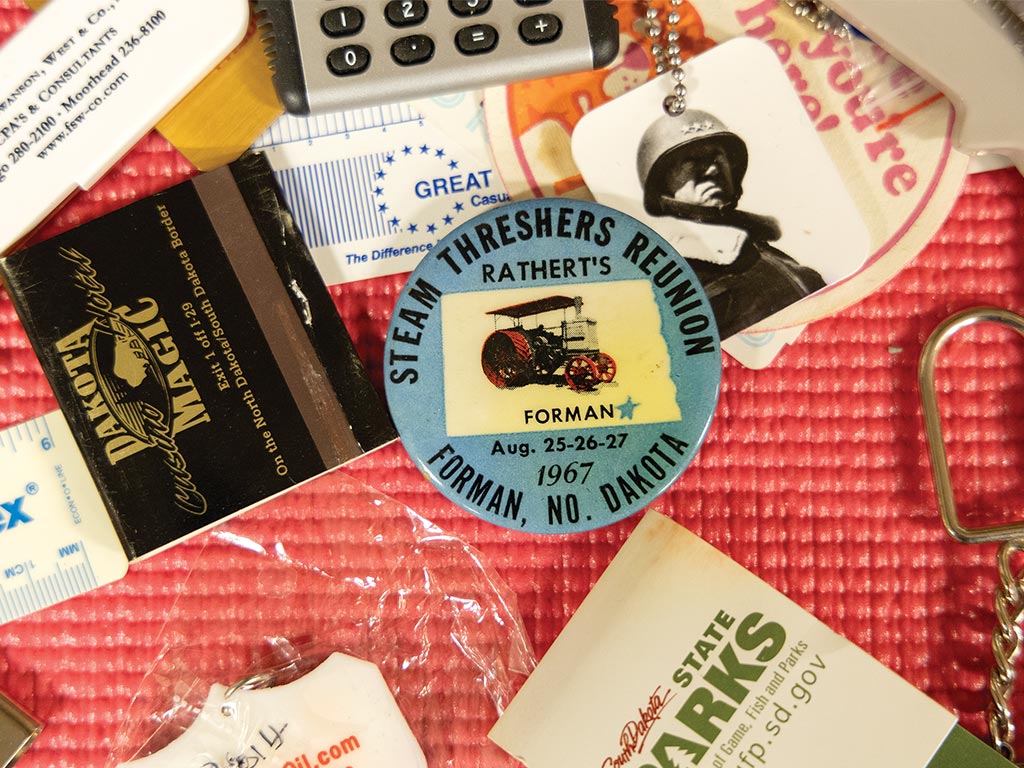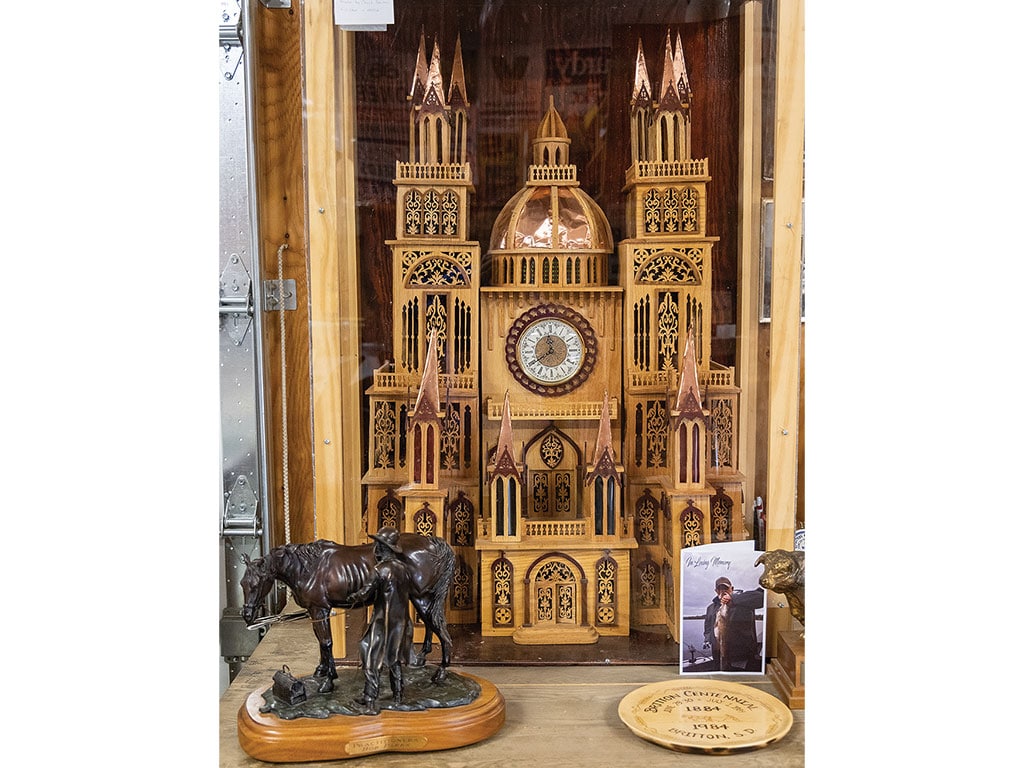Rural Living November 01, 2023
Tisher's Treasures
.
This South Dakota farm museum is a living rural history lesson.
No roped-off exhibits or "Do Not Touch" signs adorn the Tisher Country Museum near Amherst, South Dakota.
"If you want to see something better, you can pick it up to look at it or pull out a drawer," says Don Tisher, who co-owns the museum with his wife, Sharon. "We aren't that fussy."
This personal touch accompanies a trove of rural and agricultural treasures that Don Tisher has compiled over his lifetime.
"This is not a valuable museum, but you will find things in here you won't find in any other museum," he says. "These are just things that have interested me."
Items include cast-iron tools that have amazed Tisher over his lifetime. Cloth seed corn bags adorn one wall, while animal pelts and traps inhabit another. An old phonograph still plays beautiful music on a shellac resin record. Commemorative buttons, tin tobacco cans, wooden cheese crates and toy machinery are housed on walls, shop racks and in cabinets.
Above. [Tisher's] compiled commemorative buttons from numerous events over the decades. A model of a German-style church was built by the late Chuck Smith, Britton, South Dakota.
Lifetime collector. "I've been a hoarder all my life," jokes Tisher. "As a kid at Christmas, I would get key chains and ice scrapers from different places and fill shoe boxes with them. I've always been interested in the past, although I wouldn't want to live in the past."
"It's more about preserving the past," says Sharon Tisher.
Don also credits his parents, Buss and Anje, for instilling his collecting interest.
"When you grow up with parents who lived during the (Depression) 1930s, you often feel like you might need something someday," he says.
Initially, he housed his collection in various farm buildings. In 2012, the Tishers built a farm shop to house the exhibits. A neighbor, the late Burton Rademacher, constructed accompanying woodwork and platforms.
"Originally, half of the shop was going to be for collectibles and the other half was to be a place to work on projects, such as a car or tractor," says Don. "We never got that far because things started to get out of hand. People came by and said, 'We have this from Grandpa and Grandma and our kids are not interested in it.' I told them, 'Well, put your name on the back and leave it here. I don't sell anything and if you ever want it back, you can come get it.'"
One of Tisher's most interesting finds, owned by local resident Wilbert Symens, was a wooden water pump for a cistern. "When his son Irwin moved into his place, he found it and asked me if I had room for it. I had never seen one, so I told him to bring it here," says Don. "And last fall, Curtis Foster (from Britton, South Dakota) brought me another one."
One cast-iron tool that fascinates Tisher is a razor blade sharpener that a member of a nearby Hutterite colony gave him.
"When you push a button down, it flips to the other side while sharpening the razor blade," he says. "And every time you do it, there is less pressure. To me, that is clever as can be."
An ornate model of a German-style church—complete with a clock tower—stands out on the west side of the shop.
"Can you imagine building that with only one hand?" asks Don. Well, the late Chuck Smith from Britton did just that after losing a limb in a power take-off accident.
Newspapers, too, populate the museum. Amherst (current estimated population 71) once had its own newspaper, The Amherst Advance. One paper of World War I vintage celebrated a bond drive. One resident who did not contribute to the bond drive (apparently the only one!) had his name listed apart with the wording: "(Name) does not care about the flag."
Newspaper editors back then had a hard edge!
Lots of learning. "All this has been interesting," says Tisher. "I've learned a lot and I like to share it with people."
One future challenge is that few people know the purpose of certain items that are brought to the museum.
"I was the one who asked people what some of these things did," he says. "Now, I am the guy who gets asked the questions!" ‡
Read More

AGRICULTURE, SUSTAINABILITY
More from Less
Livestock integration pushes cash crop performance.

AGRICULTURE, LIVESTOCK/POULTRY
On a New Diet
Grazing brassica and legume cover crops requires a little planning.



